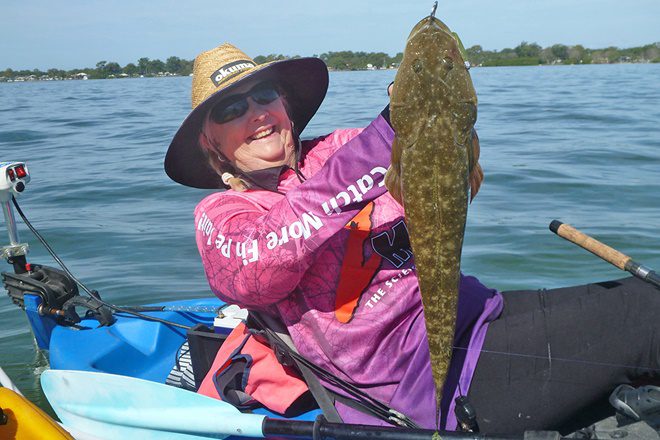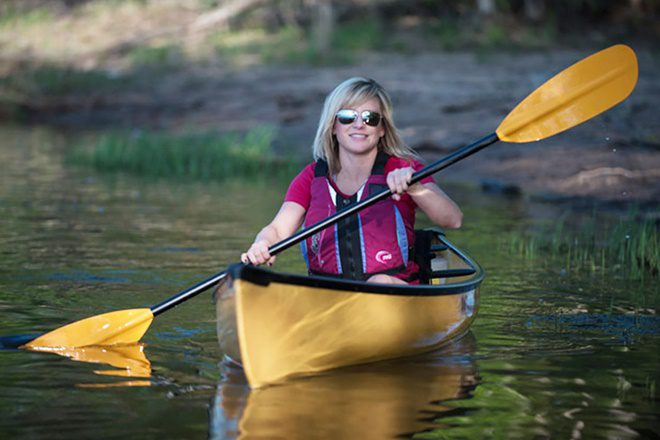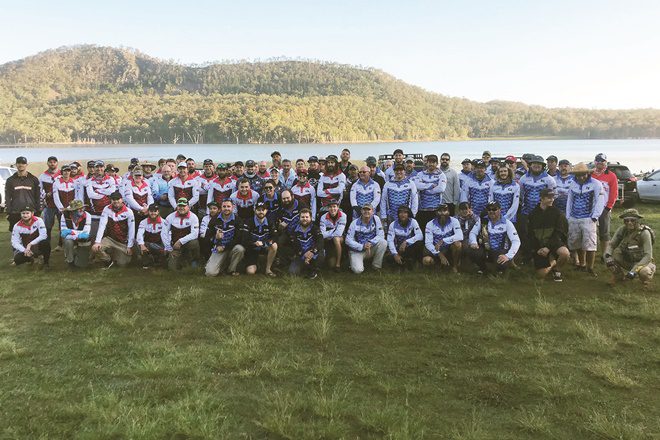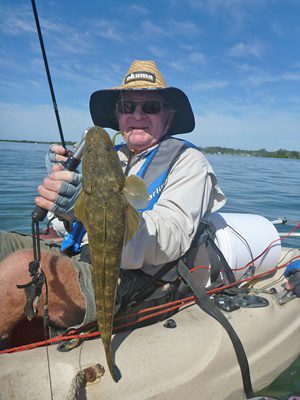
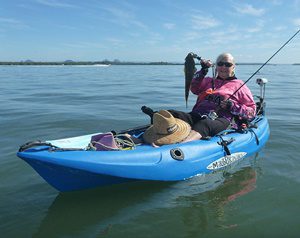
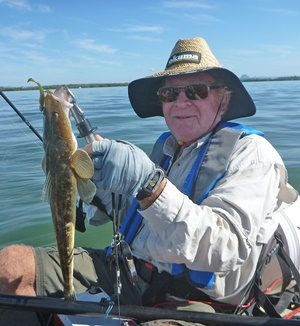
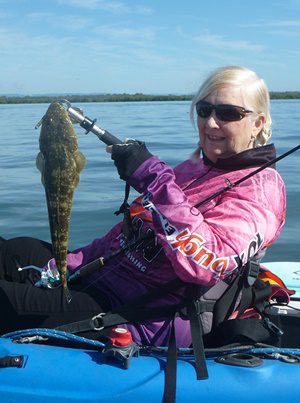
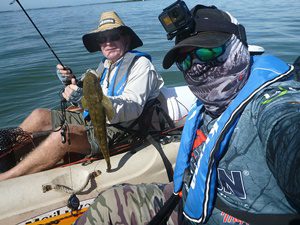
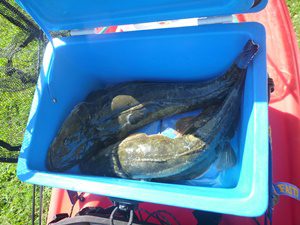
LIKE many, I hadn’t seen much of my folks due to the restrictions that were in place, so as these were eased it was great to get the parents back out and onto the water in search of flathead on the flats.
Flathead are a favourite target for many, including my parents. Flatties love eating lures, are great fun on light gear and are excellent table fish. Being in their mid-70s and fishing from kayaks, flathead are also a great option because we can stick to the rivers and estuaries, launch reasonably close to where we want to fish and target shallow flats away from most of the boat traffic.
When fishing the high-tide flats for flathead, the areas we are focusing on include sandy flats, weed edges and drop-offs in 0.5-2m of water. We generally drift the area with the last hour or two of the run-in and first hour of the run-out tide, casting ahead of the drift while also fanning casts out each side of the kayak to effectively cover the area. Pay special attention to any rock, rubble, drains, solid weed edges, timber and other structure you encounter while you drift.
We often carry a small anchor with us when drifting and this allows us to hold position and focus on structure and areas that prove productive. Gear wise, we run light spin combos consisting of 7’, 2-4kg rods and 20-30 size reels, loaded with 8-10lb braid and 10lb fluorocarbon leader. Our go-to presentation is a Z-Man 2.5” Slim SwimZ rigged on a 1/4oz, 1/0 TT Lures HeadlockZ Finesse jig head. This will see you hooked up to flathead along with by-catch such as bream, tailor, snapper and trevally.
If the bite is quiet, adding a squirt of scent to the lure can attract fish and fire them up. We generally fish with two main retrieves: a slow roll (slow wind) or a hopping retrieve (hop, hop, pause). By mixing up the retrieve speed, aggressiveness of the hops and duration of the pauses, you can begin to crack a pattern and work out what the fish want at the time. Mixing up your retrieve can also attract other species, meaning suddenly a slow flathead bite may end up being a hot bream session or crazy trevally bite.
When handling flathead, remember they have a spike on top of their head and one on each side of their head, so handle with care. A landing net is ideal for bringing them aboard and it’s important to keep their head underwater when bringing them to the kayak otherwise they will thrash from side to side, often leading to worn-through leaders or thrown lures.
Once in the kayak, a set of lip grips makes handling, measuring, photographing and releasing easier, as well as safer for both the angler and fish. I always leash my landing net, lip grips and ruler to the kayak, or attach an accessory float previously tested in the shallows to ensure it will float the attached item.
My kayak is rigged with a small icebox on the back for stowing any fish I wish to keep, complete with a couple of ice bricks to keep them in good condition. My tackle, including a dozen assorted plastics, small tray of jig heads, scent and leader, is stored in a Z-Man BinderZ and then inside a dry bag, rolled closed with enough air to float it, should it end up in the water.
What are you waiting for… flathead are accessible, great fun, love lures and are excellent table fish. Get out there! See you on the water…
Tackle Box for flathead on the flats
Rod: Okuma Cerros 702ML 7’, 2-4kg
Reel: Okuma Epixor EPXT-20
Line: Platypus Platinum Braid 8lb
Leader: Platypus Stealth FC Fluorocarbon Leader 10lb
Lure: Z-Man 2.5” Slim SwimZ in Motor Oil, Midnight Oil, Bad Shad & Pink Glow
Jig head: TT Lures 1/4oz, 1/0 HeadlockZ Finesse
Scent: Pro-Cure Super Gel Scent in Sardine/Pilchard & Saltwater Yabby/Nipper
 Bush ‘n Beach Fishing Magazine Location reports & tips for fishing, boating, camping, kayaking, 4WDing in Queensland and Northern NSW
Bush ‘n Beach Fishing Magazine Location reports & tips for fishing, boating, camping, kayaking, 4WDing in Queensland and Northern NSW

